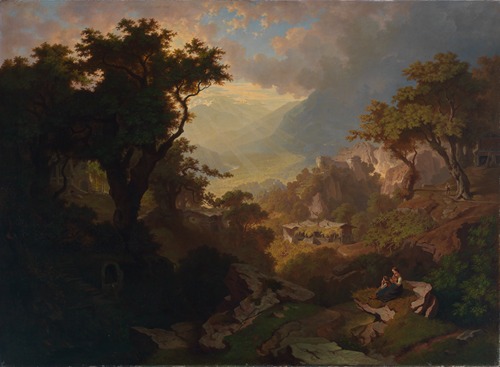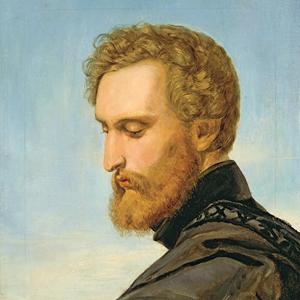


Heinrich Heinlein
Heinrich Heinlein was a German painter.
Heinlein came from a family of confectioners in Mannheim. His father was employed as a confectioner at the court of the Prince of Nassau-Weilburg. His mother (née Riedel) was the daughter of a master builder Johann Gottlieb Riedel from Bayreuth. She was the sister of Heinrich August, Heinrich Karl and Karl Christian Riedel and worked as a pastel and portrait painter. She was the aunt of Eduard and August Riedel.
Heinlein initially attended a grammar school and was destined for a career as a merchant. He felt more drawn to art and studied architecture in Mannheim before moving to Munich in 1822 to further his education at the academy and, from 1823, to devote himself actively to the study of landscape painting. In 1825, he traveled to Switzerland, Tyrol, northern Italy and Vienna. In 1830, he settled in Munich again, where from then on he cultivated landscape painting in the Romantic sense. He preferred to take his motifs from the German and Austrian Alps, focusing on the grandeur of character. He particularly appreciated the dark Upper Lake Gosau, surrounded by rugged rock faces.
He was an honorary member of the Munich and Vienna Academy of Arts. Heinlein was married and had several children.
He was so popular in the imperial era that the Allgemeine Deutsche Biographie devoted four pages to him.
